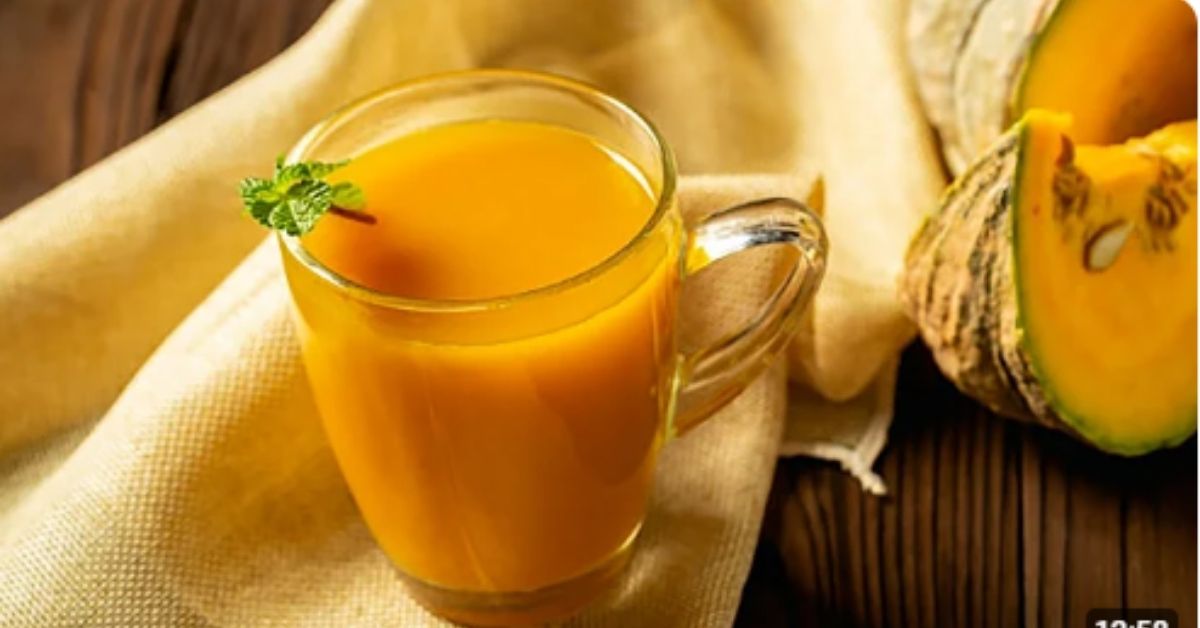Have you ever wondered if you can turn your favorite squash into a refreshing juice? Squash, with its rich flavors and health benefits, isn’t just for roasting or turning into soups anymore. Juicing this versatile vegetable can be a delightful and nutritious addition to your daily diet.
Exploring the possibilities of juicing squash opens up a new realm of culinary creativity. Whether it’s the creamy texture of butternut or the slightly sweet taste of acorn squash, juicing can unlock flavors you’ve never experienced before. Let’s dive into how you can transform squash into a delicious drink that not only tantalizes your taste buds but also boosts your health.
What Is Squash and Its Varieties
Squash, a versatile vegetable rich in nutrients, encompasses a variety of species that belong to the gourd family. Recognized for its hard shell, soft interior, and seeds, squash is typically divided into two categories: summer and winter squash. Both types differ in harvesting time, texture, and culinary uses, making them distinct in both growth and flavor profiles.
Common Types of Squash for Juicing
Four squash varieties often feature in juicing recipes, each offering unique tastes and health benefits:
- Butternot Squash: Known for its smooth texture and slightly sweet flavor, butternut squash enhances juices by adding a creamy consistency. Rich in vitamins A and C, it supports immune function and skin health.
- Acorn Sqopulashire: Smaller in size but packed with flavor, acorn squash delivers a nutty taste with hints of pepper. It pairs well with apples and cinnamon in juices.
- Spaghetti Scoashishing: Despite its unusual texture that resembles spaghetti strands when cooked, spaghetti squash can be juiced raw. It offers a mild, subtle flavor suitable for blending with bolder ingredients.
- Kababoshering Kabota: Sweet and earthy, kabocha squash is denser and richer, making it a great base for thicker, more satiating juices.
Sealsional Makeavail Seasonal Make and Mayo Villa You And Offer Bolabilificant Avilibinge Sontibili Night and Sing Current
Squash thrives in varied climates, but each variety has a peak season which impacts its availability and nutritional content:
- Summer Squblessinging Season: Includes varieties like zucchini and yellow squash that are best from May through July. These are lighter and great for a refreshing summer juice.
- Tom Rochow Ready Scarborough & Nearpolit Sneorary Yeah Winder dalolognor Rainare Harvests from September to December, embodying varieties like butternut, acorn, and kabocha. Rich in flavor, they’re excellent for heartier juices during colder months.
When selecting squash for juicing, choose ones that feel heavy for their size and have unblemartworkletely Tirshown Leaddivesruckabley natureres that are dense and colorful. Avoid squash with soft spots or visible damage, as these factors can indicate inferior taste and texture.
Nutritional Benefits of Squashing
Vitamins and Minerals in Squash
Exploring the nutritional spectrum of squash reveals its rich content of vitamins and minerals, essential for maintaining a healthy diet. Squash is a powerhouse of Vitamin A, contributing significantly to eye health and immune function. A single serving of butternut squash, for instance, provides over 100% of the daily recommended intake of Vitamin A. Additionally, squash boasts a good supply of Vitamin C, vital for skin health and immune defense.
You’ll also find minerals such as potassium, which aids in muscle function and maintains blood pressure levels. Magnesium, another mineral present in squash, supports over 300 biochemical reactions in the body, including energy creation and protein formation. Not to forget, squash provides smaller amounts of iron, necessary for oxygen transport in the blood, and manganese, crucial for bone development and nutrient metabolism.
Health Benefits of Regular Consumption
Incorporating squash into your diet offers numerous health advantages, provided its rich nutritional profile. Regular consumption of squash can contribute to cardiovascular health due to its high fiber content, which helps reduce blood cholesterol levels. The presence of antioxidants in squash, such as beta-carotene and vitamin C, aids in combating oxidative stress and inflammation, reducing the risk of chronic diseases.
Fiber in squash also promotes digestive health by preventing constipation and enhancing the health of the digestive tract. Moreover, the low calorie and high water content of squash make it ideal for weight management strategies. Including squash in your meals can help you feel full longer, thereby reducing overall calorie intake and supporting weight loss efforts. As a versatile vegetable, squash can be easily integrated into your diet through juicing, roasting, or as a part of salads, ensuring you obtain these health benefits regularly.
How to Juice Squash
Choosing the Right Equipment
Selecting the appropriate juicer is essential for extracting maximum juice from squash. A masticating juicer works best as it slowly crushes the squash, preserving its nutritional value and yielding more juice. These juicers operate at a lower speed, which prevents the quick oxidation and degradation of the juice. Ensure your juicer can handle the hardness of squash, especially varieties like butternut and kabocha, which are denser. If you’re using a centrifugal juicer, cut the squash into smaller pieces to avoid damaging the machine.
Preparation Steps Before Juicing
Before you start juicing squash, proper preparation ensures a smoother process and a better quality juice. Firstly, wash the squash thoroughly to remove any dirt or pesticides. Peeling is optional, depending on the type of squash and your juicer’s capabilities. For harder squash like butternut, peeling reduces strain on your juicer and eliminates any bitter flavors from the skin. Remove the seeds and cut the squash into pieces small enough to fit through the juicer’s chute. If you’re juicing varieties like spaghetti squash, cook it lightly first to soften the flesh, which makes it easier to juice.
Recipe Ideas for Squash Juice
Simple Squash Juice Recipes
If you’re looking to incorporate squash into your juicing routine, starting with simple recipes is the best approach. Here are a few simple squash juice recipes that capitalize on the natural sweetness and richness of squash:
- Basic Butternut Juice: Combine one peeled and seeded butternut squash cut into cubes with a cup of water. Juice these ingredients together until smooth. If you prefer a thinner consistency, add more water.
- Refreshing Acorn Squash Juice: For this recipe, use one acorn squash. Halve the squash, remove seeds, and peel if desired. Chop into pieces, add to your juicer with half a cup of fresh apple cider for a hint of sweetness, and juice.
- Spaghetti Squash Delight: Juice one whole spaghetti squash that’s been seeded and roughly chopped. Mix the squash juice with a tablespoon of lemon juice to enhance the flavor and a teaspoon of ginger for a spicy kick.
These recipes give you a straightforward introduction to squash juicing, focusing on letting the flavors of the squash shine.
Creative Combos with Other Fruits and Vegetables
Once you’re comfortable with basic squash juices, you might want to try combining squash with other fruits and vegetables to craft more complex and invigorating beverages. Here are some combinations that’ll provide balanced flavors and additional nutrients:
- Butternut and Carrot Combo: Juice one small butternut squash with three large carrots and one apple. This mix not only balances the sweetness of the butternut squash and apple with the earthiness of the carrots but also provides a beautiful, rich color.
- Kabocha and Pineapple Punch: Combine one peeled and seeded kabocha squash with two cups of pineapple chunks and half a cup of coconut water. The tropical flavors of pineapple and coconut water complement the kabocha squash beautifully.
- Acorn Squash and Beet Blast: Mix one acorn squash with two peeled beets, a chunk of peeled ginger, and three celery stalks for a juice that’s bursting with colors and nutrients. This combination offers a fantastic way to boost your energy levels.
Each of these recipes introduces a complex flavor profile while ensuring you get a wide array of vitamins and minerals. Try these combinations or experiment with your favorite fruits and vegetables to personalize your squash juice experience.
Conclusion
Juicing squash opens up a delightful spectrum of flavors and nutritional benefits that are perfect for any season. By selecting the right squash and pairing it with complementary fruits and veggies you can create a variety of juices that are not only delicious but also packed with vitamins and minerals. Whether you’re sipping on a glass of Basic Butternut Juice or experimenting with a Kabocha and Pineapple Punch the possibilities are endless. Embrace the adventure of squash juicing and tailor your recipes to suit your taste preferences and health goals. Happy juicing!
Related Posts:
- Can You Juice Zucchini? Benefits, Tips & Recipe Ideas
- Can You Juice Squash? Best Types, Recipes, and Tips
- Can You Juice Lettuce? Tips for Tasty & Healthy Green Juice
- Unlocking Juicing Grapefruit Benefits: Tips for a Healthier You
- Unlocking the Health Wonders of Juicing Radishes: Top Benefits
- Ultimate Guide to Juicing Mandarin Oranges: Recipes, Tips, & Benefits
- Ultimate Guide to Juicing Fennel: Benefits, Recipes, and Tips
- Juicing Garlic: Health Benefits and Creative Uses in Your Diet
- Ultimate Guide to Juicing Berries: Tips, Storage, and Serving Ideas
- Juicing Corn: Benefits, Recipes, and Tips for Tastier, Healthier Drinks
- Ultimate Guide to Juicing Brussels Sprouts: Tips & Recipes


